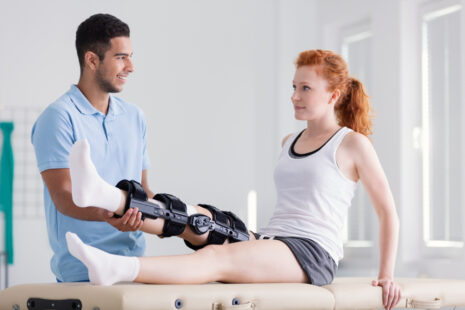Gymnastics can influence body composition in various ways, leading to changes in muscle mass and body fat levels depending on the intensity, frequency, and type of gymnastics training, as well as an individual’s diet and genetic predisposition. Here’s how gymnastics can impact body shape and composition…
Muscular Development
Gymnasts typically develop a high level of muscle tone and strength, especially in the core, upper body, and lower body, due to the demands of the sport. Gymnastics requires athletes to lift, support, and propel their body weight in various ways, leading to significant muscular development. This includes exercises and routines that involve swinging, balancing, jumping, and tumbling, all of which engage multiple muscle groups intensely.
Low Body Fat
The rigorous physical activity involved in gymnastics also tends to reduce body fat percentages, making muscles more visible and defined. This is partly because gymnastics training can be highly aerobic, in addition to being an anaerobic exercise, which is effective in burning calories and fat. The sport’s emphasis on flexibility and agility also contributes to a leaner physique.
Impact on Body Shape
- Gymnastics and Skinniness – The lean appearance often associated with gymnasts is typically the result of low body fat and high muscle definition rather than being “skinny” in the sense of having little muscle mass. Gymnasts usually have strong, well-defined muscles.
- Gymnastics and Muscularity – While gymnastics leads to increased muscle tone and strength, the level of muscularity will vary. Gymnasts tend to develop a balanced, symmetrical muscularity that emphasizes power, flexibility, and endurance rather than the bulk seen in bodybuilding.
Factors Influencing Body Composition
- Training Intensity and Volume – Elite gymnasts train for many hours each week, which significantly influences body composition. Recreational gymnastics may have a less pronounced effect.
- Diet and Nutrition – The diet of a gymnast also plays a crucial role in shaping body composition. A diet that supports muscle growth and recovery while managing calorie intake can lead to a leaner, more muscular physique.
- Genetics – Individual genetics play a significant role in determining body composition, influencing how quickly muscle is gained and where fat is stored.
Considerations
Note that while gymnastics can contribute to a lean and muscular physique, the ideal body composition for health and performance can vary widely among individuals. A focus on healthy training practices, adequate nutrition, and recovery is essential for supporting the physical demands of gymnastics and promoting overall well-being.
In summary, gymnastics training typically leads to a lean, muscular physique due to its demands for strength, power, and endurance. Yet, the extent to which one becomes “skinny” or “muscular” depends on various factors, including training routines, dietary habits, and genetics.




